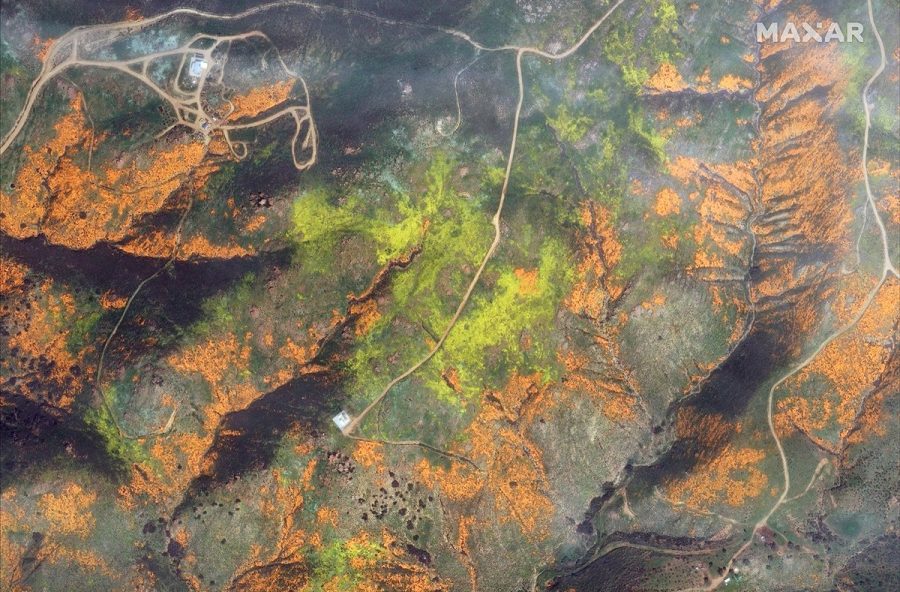Can We Expect a 2020 Super Bloom?
The 2019 super bloom of Walker Canyon was so vibrant that it could be seen from space; this image was taken by WorldView-2 Satellite.
February 25, 2020
Sometimes it can be hard for Southern Californians to admit that they live in a desert. Nonetheless, residents of the region have grown accustomed to dry weather, drought, mudslides, and the occasional wildfire. Karyss Park (9) says that living in “constant sunny weather is nice…[but] sometimes the heat and dryness gets tiring.” Perhaps this explains the ardent enthusiasm surrounding California super blooms.
National Geographic defines a super bloom as “a colloquial term” that is “used to define an explosion of wildflowers that exceeds typical spring blooms.” These vibrant displays of color have become somewhat of a tourist attraction in Southern California. Crowds flock to witness the transformation of the desert; barren hillsides and valleys become blanketed in orange and purple.
Typical flowers of the Orange County region include: lupine, thistle, goldfields, and poppies, the official state flower.
For the successful bloom of dormant seeds, certain conditions must be met: according to The NY Times, super blooms can only occur when a “drought [is] followed by abundant rain, [with] temperatures not too hot and not too cold, and an absence of strong wind.” With such specific conditions, it makes sense that super blooms generally occur about once per decade (Destination Irvine). Despite this, California has experienced super blooms in 2005, 2017, and 2019 (NY Times).
Los Angeles Magazine reports that 2019 had “more blooms” that “lasted longer” than the other years, due to the previous long drought and melting snow caps nearby. The particularly large bloom attracted swarms of Painted Lady butterflies, making their annual migration north from Mexico (Los Angeles Magazine). News spread of the whimsical super bloom landscape, and soon flowering areas were not only surrounded by butterflies, but also by people.
Just thirty miles away from Yorba Linda is Walker Canyon, near Lake Elsinore; this location has been particularly impacted by recent super blooms. Mayor of Lake Elsinore, Steve Manos, says that “We saw an explosion in interest and, all of a sudden, lots and lots of visitors.” People came to hike, take pictures, and see the flowers, and eventually the location became so popular that Lake Elsinore had “100,000 [people] in this city all at one time.” To put into perspective, The World Population Review estimates a normal population of only 68,183.
Unfortunately for those thousands of visitors, professor of ecology Dr. Exequiel Ezcurra predicts that the same bloom “is very unlikely” to occur in 2020. Ezcurra says that “There is nothing that makes me suppose it will be a super bloom… Last year was a good year for annual plants. This year I have seen no indication it will be as good.”





































